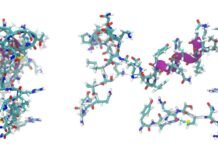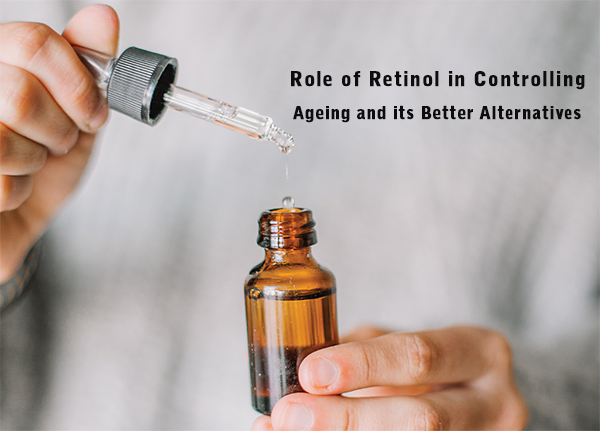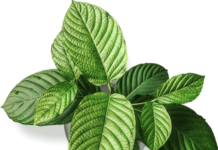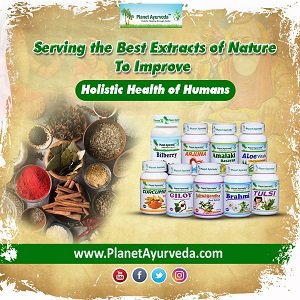Abstract
Vitamin A comes from two sources one is retinoids (preformed vitamin A) and another is carotenoids (preformed vitamin A). These both are converted into retinol by the liver. Skin is a retinoid responsive organ and is readily able to absorb vitamin A when it is topically applied. Retinol is responsible for producing new skin cells and without its skin can even dry. In the article we will discuss retinol in detail, their use in controlling the aging process and keeping the skin glowing and firm. In addition, we will also discuss natural alternatives to retinol.
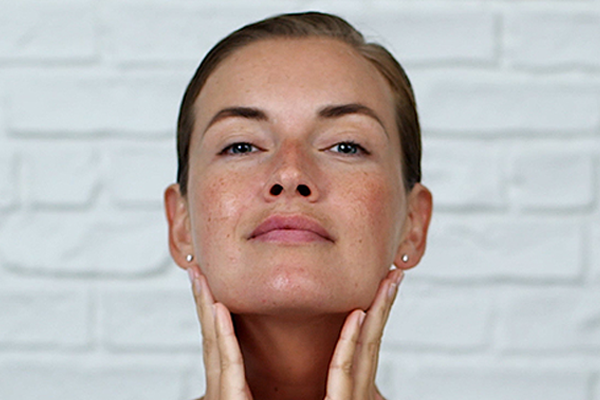
Introduction
Retinol is something that gives you the opportunity to change the way you age instead of increasing age making changes to you. Retinol is very much effective in vanishing the sign of aging. Retinol is a gold standard ingredient used in skin care which can alter the behaviour of aged cells so that they act in a youthful manner. It helps in smoothing and refining the texture of skin and also enhancing radiance of skin. Retinol is incorporated in age preventive skin care routines as it accelerates skin renewal and also enhances collagen production. Retinol also helps in reducing appearance of aging, uneven texture and age spots.
Why Should we use Retinol?
As mentioned before retinoides are considered as the gold standard for antiaging and also for treating acne. They behave as a backbone of nearly every efficient anti-aging skin care routine. Retinoids are not only capable of increasing cellular turnover rate of keratinocytes (which are the cells present on the outermost layer of skin) but also help in exfoliating older keratinocytes at an increased rate. It also helps in unclogging the pores and keeps your skin friction free and fresh. When used for a longer period of time, retinoides have the potential of boosting production of collagen and elastin in the dermis which is the second deeper layer of skin.
When is the Exact Time to Start with Retinol?
You can start with retinol when you are reaching your thirties. Reason is simple, more wear and tear with time results in decreased collagen production slowly in our skin cells. Cells gradually reduce their elastin production and thus skin starts showing signs of aging like fine lines, wrinkles, dryness of skin, open pores, lack of lustre and loss of plump. So, it is very important to understand the correct time for retinol use.
Side Effects of Retinol
Retinol is must to be used by each and everyone but some people are not able to use it because of skin dryness and red spots. Moreover, if applied on moist skin retinol can show a tendency to penetrate deeper and hence further results in red spots and excessive dryness. According to the current reputation, retinol is responsible for skin peeling also. Retinol also has the potential of causing skin irritation along with some itchiness and scaly patches.
Now when we have discussed all about retinol, it affects and side effects then we should also move on to its natural alternatives. It’s quite obvious that the retinol we are being provided with comes from a synthetic source in maximum beauty care products but we can also get the same retinol from its natural alternatives.
Let’s Get to Know About Some Natural Alternatives of Retinol
1. Lycopene
Lycopene is an antioxidant which has many benefits. Lycopene is the extract of fruits like tomatoes. This chemical constituent is best for protecting skin from sunburns and is very effective in conditions like sunburn and heat burn. It potentially reduces skin roughness and dryness especially when it is applied topically. Lycopene particularly works by inhibiting breaking of collagen and elastin which are responsible for keeping skin firmness intact.
2. Immortelle Oil
Immortelle oil is very effective in vanishing signs of aging and also builds a protective barrier on skin that does not allow the effect of pollutants and harmful sun rays over the skin. Along with this, oil is rich in essential fatty acids and antioxidants. It acts by softening and strengthening the skin as well as having collagen promoting effect on skin which in turn helps in reducing fine lines and wrinkles. It regenerates cells and shows rejuvenating effects on skin and in addition improves pigmentation and scars marks.
3. Black Elder
Black elder contains high levels of flavonoids which increases its possibility to decrease inflammation which is mainly due to red spots on skin and dryness. It also has the right amount of antioxidant that can improve the appearance of aging skin. Black elders fight puffiness over below and over the eyes. These are also the source of elderberries which are often used to boost the immune system. All over if understood it has wonderful skin care properties and is heaven for skin care routine.
4. Vitamin B3
Vitamin B3 is used in skin care due to its ability to promote healthy skin cells that are efficient in producing collagen and elastin necessary for delaying skin aging. It also helps in improving blood circulation and oxygenation which in turn results in reducing the appearance of wrinkles, treats sun damage, improves dull looking skin appearance and tones up the skin.
Conclusion
The greed to look good and great has increased with time. That’s why so much research is being done on the process of aging so as to understand it deeply and make alternatives in order to slow down the process. In this way substances like retinol came into existence and their demand is increasing with time. There is no harm if you want to look good even in your older days as radiant flawless skin is the dream of every age group but you must understand that using nature is much better than using chemically synthesized products on skin. In case of any query kindly visit www.PlanetAyurveda.com













